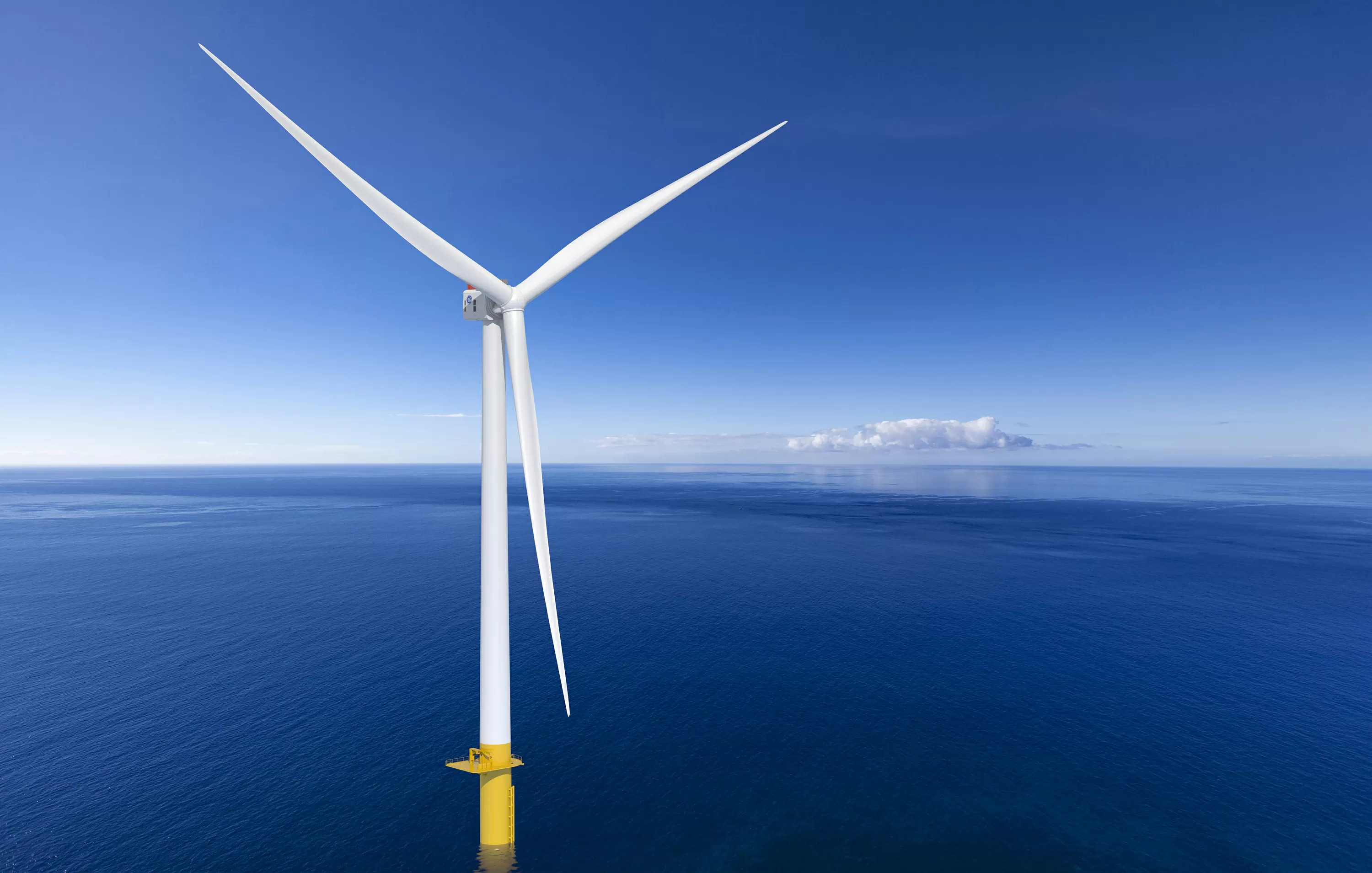Moving quickly on the Biden administration’s renewable energy agenda, the Bureau of Ocean Energy Management completed its environmental review of the 800-megawatt Vineyard Wind plan, clearing the path for the first truly commercial-scale U.S. offshore wind project.
“The United States is poised to become a global clean energy leader,” said Laura Daniel Davis, a deputy assistant secretary in the Department of Interior, in announcing the step Monday. “To realize the full environmental and economic benefits of offshore wind, we must work together to ensure all potential development is advanced with robust stakeholder outreach and scientific integrity.”
Located about 15 nautical miles off Martha’s Vineyard, Mass., Vineyard Wind is viewed as a bellwether for the nascent U.S. offshore wind industry. Analysts have predicted BOEM approval would trigger new investment commitments to building out a U.S.-flag wind energy workboat fleet and East Coast port improvements to accommodate up to 15 other projects now in various planning stages.
"A timely and effective permitting regime is a necessity in developing the generational energy and economic opportunity of offshore wind. With Interior's announcement, we are closer to that reality,” said Erik Milito, president of the National Ocean Industries Association.
“Offshore energy development provides an opportunity for us to work with Tribal nations, communities, and other ocean users to ensure all decisions are transparent and utilize the best available science,” said BOEM Director Amanda Lefton, who was recruited to the Biden administration after working in New York state government to advance renewable energy programs there including offshore wind. “We appreciate everyone’s participation in the process and look forward to continuing to work with stakeholders on the future analysis of offshore wind projects.”
It has been a twisting path for the Vineyard Wind plan review, which appeared to be on a smooth glide path in summer 2019. Vineyard Wind had obtained its offshore lease from BOEM at auction in 2015, submitted permit applications in 2017, and the following year won an offshore power contract with Massachusetts.
But then the Great Atlantic regional office of the National Marine Fisheries Service refused to sign off on a draft environmental impact statement, citing a need for more fisheries data and study of potential cumulative impacts of wind energy development off the East Coast.
BOEM went back to the drawing board and in June 2020 completed a supplemental impact study. As the agency moved closer toward a final record of decision, Vineyard Wind officials abruptly withdrew their construction and operations plan, saying they needed to update it for using larger, more powerful GE Haliade-X turbines, reducing the number of installations to 84 machines.
With little more than a month left before the end of the Trump administration, its top Interior officials said Vineyard Wind’s decision meant it would need to reapply and started the process over.
Two days after President Bidens’s Jan. 20 inauguration, the company sent BOEM a letter asking to resume the environmental review.
Now, BOEM is working toward “a record of decision whether to approve, disapprove, or approve with modifications the proposed project,” Interior officials said. “The U.S. Army Corps of Engineers and the National Marine Fisheries Service will sign this joint record of decision for their respective authorization decisions.”
“We want to thank BOEM for all of the work they’ve done since we submitted the permit application in December of 2017 on this first-in-the-nation project,” said Vineyard Wind CEO Lars T. Pedersen. “More than three years of federal review and public comment is nearing its conclusion and 2021 is poised to be a momentous year for our project and the broader offshore wind industry.”
The move is “a sorely needed regulatory decision for investors and re-positions the U.S. as a player in the trillion-dollar global offshore wind industry,” according to the Business Network for Offshore Wind (BNOW) industry group. The group recently counted “418 contracts nationwide, including 51 involving the Vineyard Wind project, and $3.6 billion in public and private investments even before a U.S. commercial-size project has begun construction. That number is expected to quickly multiply as newly confident investors begin building the local U.S. supply chain in earnest.”
“This is the day the U.S. offshore wind industry has been anxiously awaiting for years. Today’s announcement provides the regulatory greenlight the industry needs to attract investments and move projects forward,” said Liz Burdock, BNOW president and CEO. “The U.S. can’t be one and done. Otherwise, we cannot compete with the explosive growth currently seen in Asian and European markets.”
"On behalf of the Jones Act vessel operators and mariners that look forward to constructing this project, OMSA expresses its congratulations to our friends at Vineyard Wind," said Aaron Smith, president and CEO of the Offshore Marine Service Association. "Today is a great day for the Jones Act industry."




